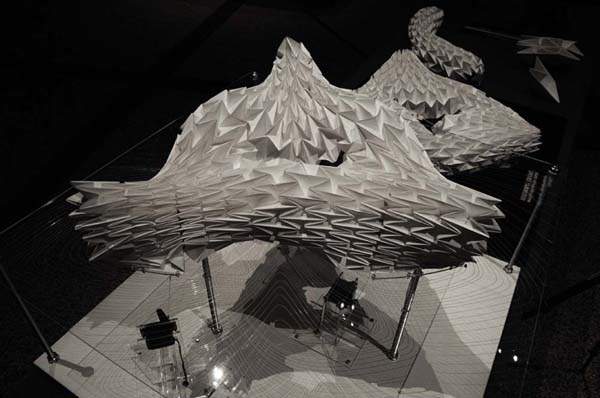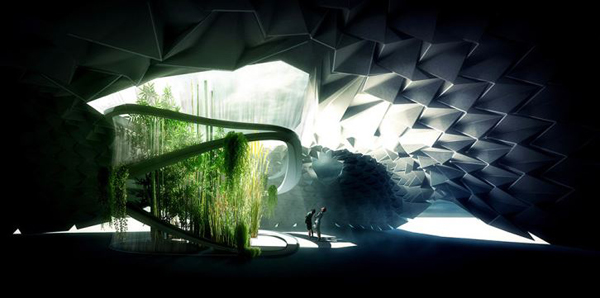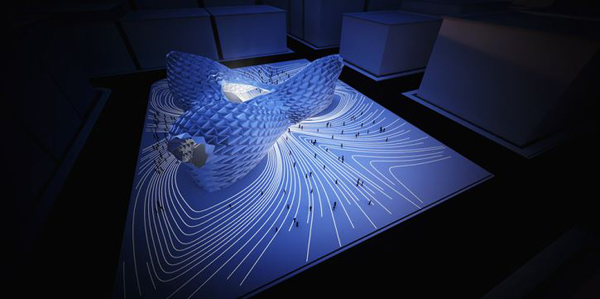The Breathing Shelter, by Rhina Portillo and Matthias Urschler was done at Vienna University of Applied Arts, Energy and Design Strategies Department. The designed structure is a pavilion designed to adjust to different climate conditions. It is conceived with a different approach, not knowing its site; its main feature is flexibility to its environment. The formal language used for this project is a form-finding process looking for suitable configurations that allow the building itself to be a kinetic model.
Its genesis is in the movement of three modules that are able to breathe independently, reacting according to interior needs. This movement allows air flow that is able to balance the interior temperatures. The model also changes its basic position depending on the season. Therefore, it interacts with airflow and has both a summer and winter mode. The summer position is when the folds are relaxed, and the opposite situation the winter shape, were the body is completely contracted to reduce the volume of space in the building, helping to keep the temperature as high as possible. In addition, when the shape is contracted the skin allows any snow to slide off of the structure.
Through its overall shape, the building can take in and exhaust air. It can therefore control both the amount and the speed of air that is needed within the building. To reduce the effort of conditioning the air, the overall building shape can reduce its volume in winter and can enlarge it in summer.


















